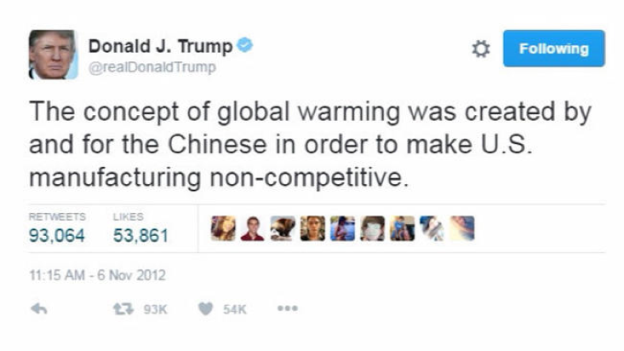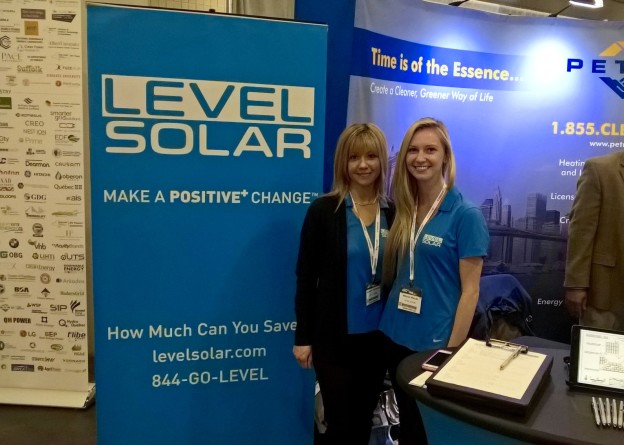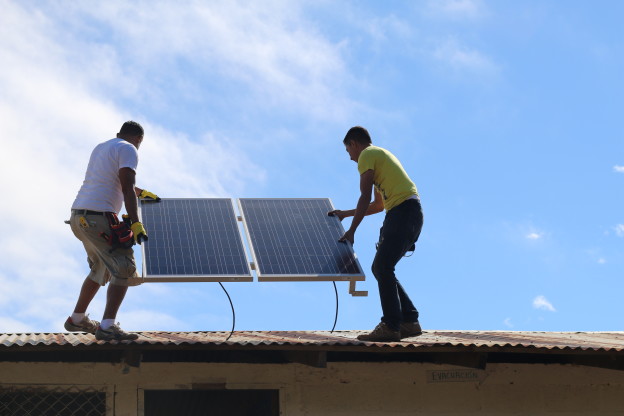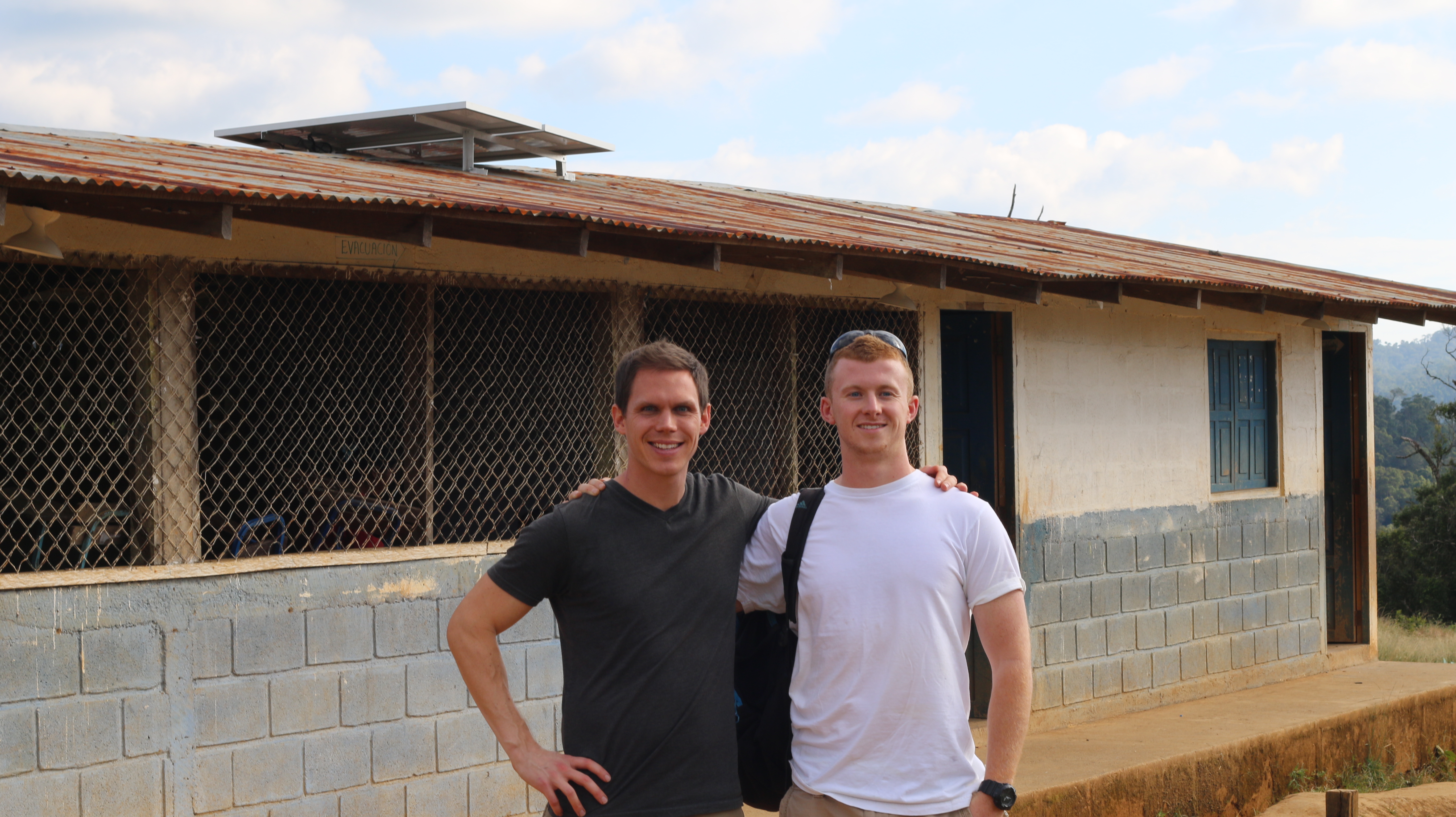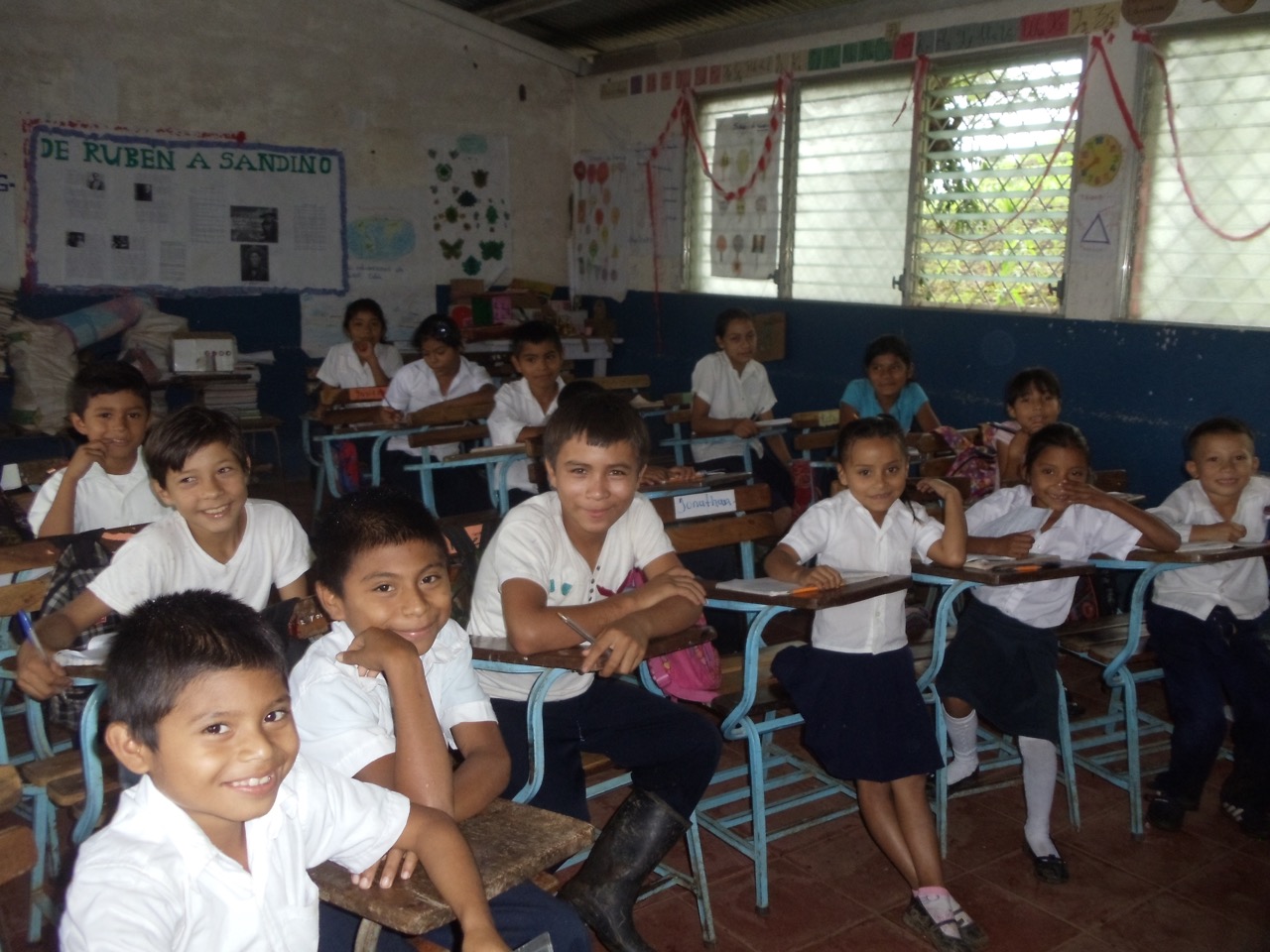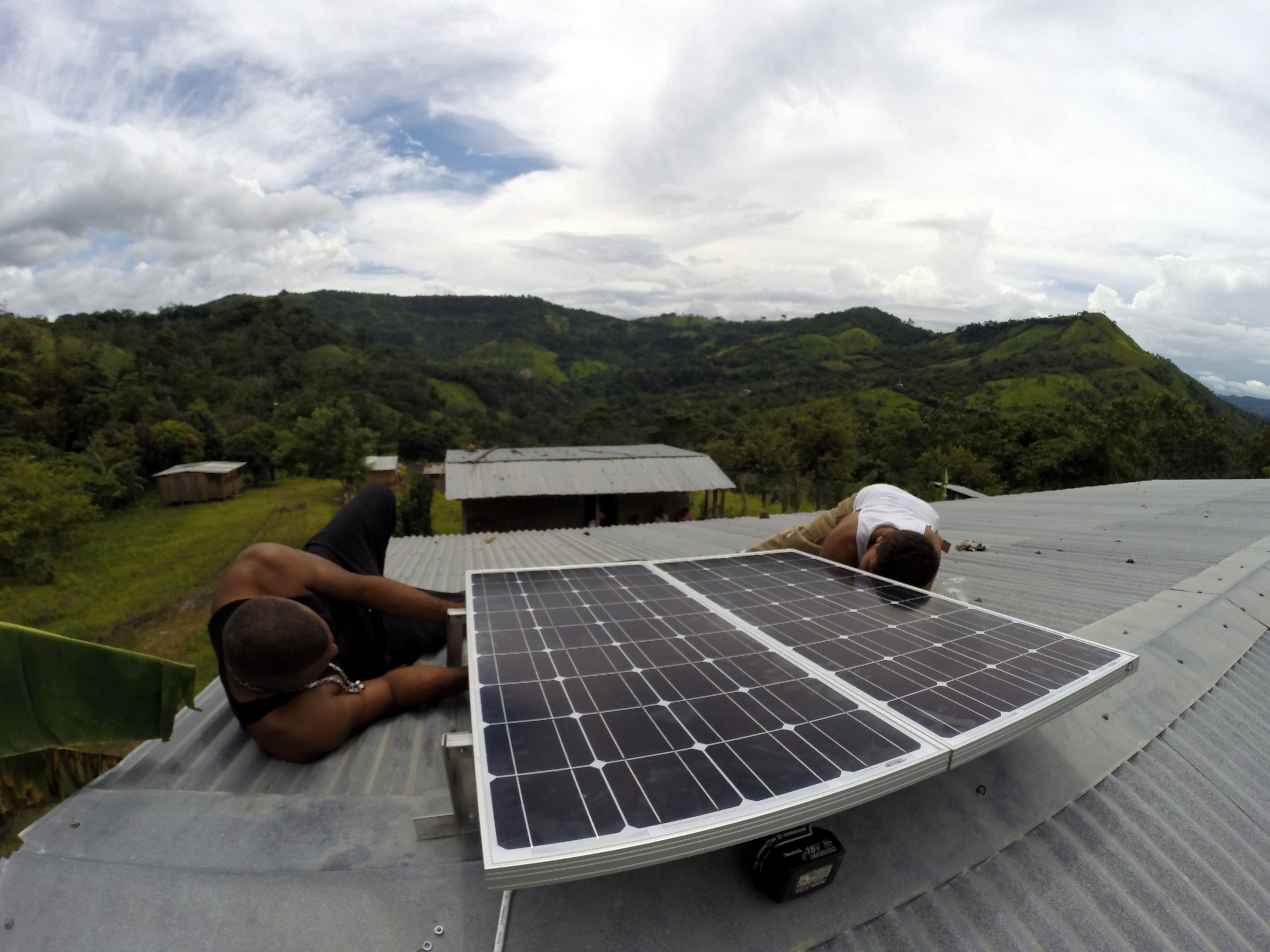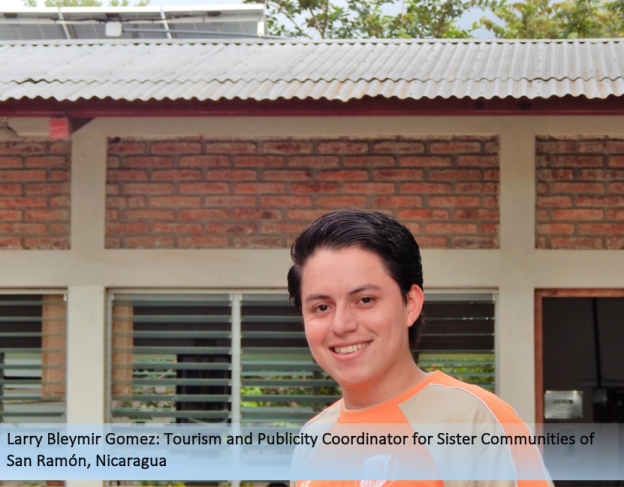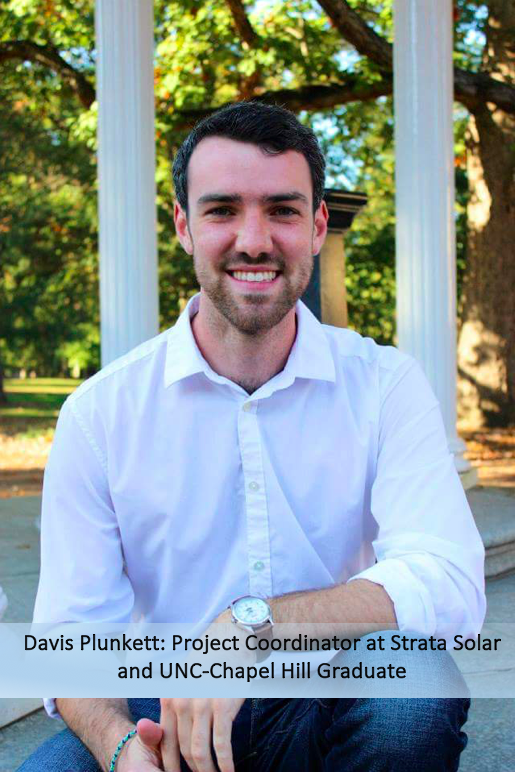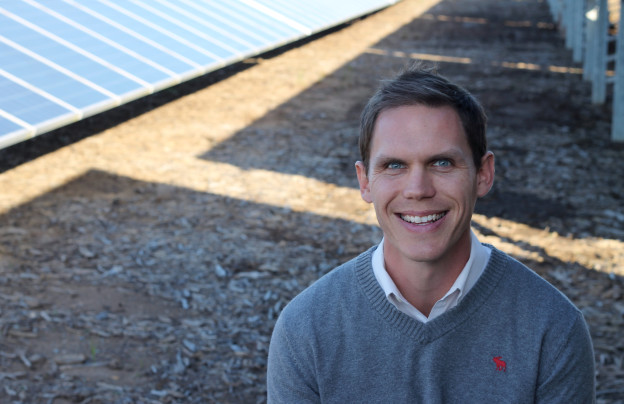President Trump has been a long-time climate change denier. We know this from his rants during his campaign, his tweets —his most famous being that the global climate change is just a “Chinese hoax”—, and from Trump’s writings in his book titled Crippled America. I’m glad our President has the environmental knowhow to make an anti-climate change claim with such certainty! Not to mention, according to The Express Tribune, China is becoming world leader in clean energy investments. One would expect a businessman like Donald Trump to strive to be a leader in our future energy economy. Instead, he wants to invest in the dying coal industry. Contrary to popular belief, coal is not seeing its demise due to environmental policy, but rather due to the growth of the natural gas industry.
Anyway, what does this mean for solar and other climate change policies?
Although President Trump’s new budget has cut the EPA’s budget by an unprecedented 31% and eliminated the Advanced Research Projects Agency-Energy (ARPA-E), state governments are still holding true to their commitment to clean energy. Environmental responsibility is now reallocated to the states, and it will be the accumulation of our local governments to uphold their advancement towards a low-carbon future. States and cities are big players in curbing climate change and control a majority of the legal and policy power regarding these efforts. For example, the state public utility commissions regulate investor-owned electric utilities, state legislatures set up portfolio standards, and they decide on building codes. Below are some examples of policies that are expected to thrive and survive under the Trump Administration.
- The Regional Greenhouse Gas Initiative, or RGGI: This is a cap-and-trade policy that limits the amount of CO2 emissions in nine of its member states. This cooperative effort includes Connecticut, Delaware, Maine, Maryland, Massachusetts, New Hampshire, New York, Rhode Island, and Vermont. The RGGI CO2 cap declines 2.5 percent each year from 2015 to 2020.
- Renewable Energy Portfolio Standards (RPS): 29 states have RPS which requires utilities to sell a specified percentage or specific amount of renewable electricity. Iowa was the first state to implement an RPS in 1983 and Hawaii has the most aggressive at 100% renewables by 2045. These policies support the renewable energy market and help diversity the overall energy mix. States with no standard or target goal include many in the southeast region.
- Net Metering Policies: 44 States have net metering policies, which financially incentivizes the switch to renewable energy. These types of policies allow distributed generation customers to sell excess electricity to a utility at a retail rate and receive credit on their utility bill. In New York, for example, people who have residential-scale solar installed will have their excess energy stored in a bank credit system. People can pull from that system throughout the subsequent months if needed. At the end of the year, if there is leftover net excess generation (NEG), their utility will pay their customer according to the amount that is leftover.
- La Plata Electric Association’s (LPEA) Renewable Energy Credit in Colorado: The accumulation of small policies like these can go a long way! This policy applies to solar photovoltaics, wind, and hydroelectric and is scalable to include commercial, residential, industrial, and federal sectors. For residential, the incentive is $16/kW for a maximum system size of 10 kW. Basically, customers of LPEA who have a solar array will be paid $16/kW of excess electricity generated by their system.
- What will happen to North Carolina’s Investment Tax Credit?: Homeowners in North Carolina who install a solar system on their home are eligible for a 30 percent dollar-for-dollar tax credit up until 2019. This program is designed to gradually decrease credits from 2019 to 2022. The credit applies to technologies such as PV, solar water heating, wind and others until 2019, when it will then gradually decrease to 10%.
Although the Trump Administration is actively trying to rip apart the strides made towards clean energy, the accumulation of states still hold the power to curb climate change. Furthermore, there isn’t a question of whether or not renewables will take a stronger hold in our energy market, but rather a question of when. In addition to environmental gains, switching over to renewables will be smarter economically, is better for energy security, and we will allow us to be less dependent on foreign oil.
The move to green energy seems like the smart move to me.
Article By: Andie Migden


